
Tsering Tendar and Dechen Ngodrup on the top of Mount Vinson, the highest mountain in Antarctica. (Photo provided by Tsering Tendar)
For most people, the age of 29 marks only the beginning of their career. But two young Tibetan mountaineers, at this age, have accomplished the lifetime dream of probably all adventurers and mountaineers -- the Explorers Grand Slam.
Tsering Tendar and Dechen Ngodrup, the two most promising mountaineers from the China Tibet Mountaineer Team, have reached the North Pole and the South Pole and scaled all of the Seven Summits -- the highest mountains of each of the seven continents-- over the past five years.
In an exclusive interview, Tsering Tendar shared with Xinhua his latest experience of scaling Vinson Massif, the highest mountain in Antarctica, and trekking to the South Pole.
COURAGE
With an elevation of 4,897 meters (16,066 feet), Mount Vinson is the highest mountain in Antarctica. It's not a great height compared with other summits, but its location - around 1,200 kilometers (750 miles) away from the South Pole, makes it the coldest summit. Also, it is the last to have been discovered, conquered and named among the Seven Summits.
Tsering Tendar and Dechen Ngodrup together with the mountaineering team of the China University of Geosciences based in central China's Wuhan City arrived in Antarctica on Dec.2 to prepare for the climbing in the middle of the month. December through February is the continent's summer season, deemed the best period for climbing.

Team members on the way to the top of Mount Vinson. (Photo provided by Tsering Tendar)
However, the extremely cold, foggy and windy weather postponed and prolonged their original plan.
"Our team arrived at the Vinson's base camp on December 10 and planned to make it to the top in five days. But heavy fog and strong wind kept us awaiting," Tsering said.
Extreme cold is a big challenge to the climbers. Tsering said the average temperature in December in Antarctica range from -30C (-22F) to -40C (-40F) and a sudden wind would cause a drastic drop to -50C (-58F). They wore the same warm-keeping gears as they did when climbing Mount Qomolangma.
While other summits are more challenging from a technical perspective in climbing, the weather and the short window of opportunity to climb keep many climbers from making it to the top of Vinson.
Luckily, the opportunity came only two days later. Weather calmed down on Dec.13, and the team set off to ascend the top at 2 p.m.
They climbed for 11 hours on snow and rock slopes with an average pitch of around 40 degrees and finally reached the summit at 1:30 am on December 14.
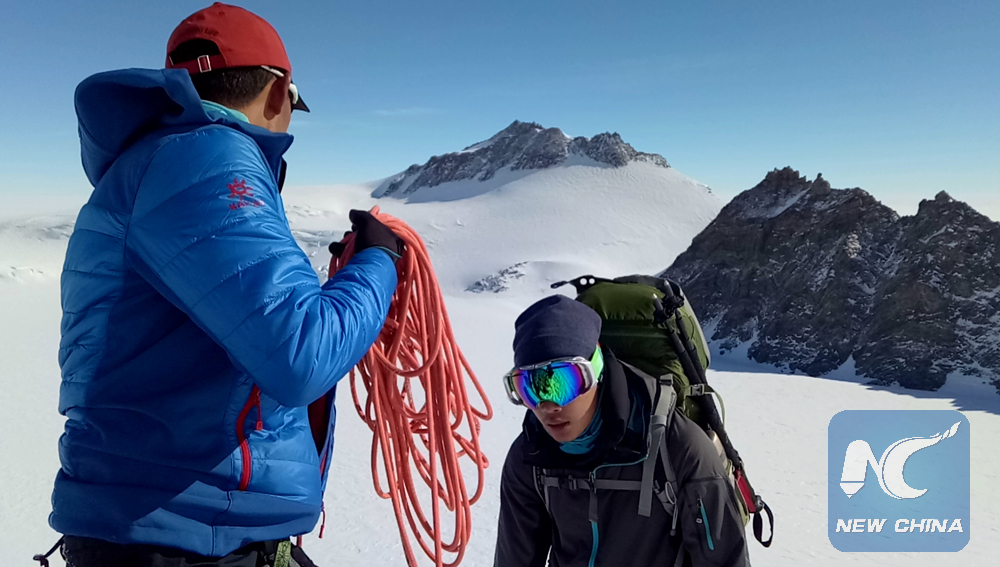
Team members use protection robes when climbing Mount Vinson. (Photo provided by Tsering Tendar)
"The wind was huge, reaching up to 20 meters per second as we were close to the top. We could hardly stand firm and had to hold onto the climbing robes to avoid falling off," Tsering said.
The snow-covered peak of Mount Vinson and the vast glaciers below and in the distance were reminiscent of the scenery Tsering had seen on Mount Qomolangma, the highest peak on earth, which locates in Tsering's hometown--southwest China's Tibet Autonomous Region.
"On the top of Mount Qomolangma, I was stunned by the forest of mountains, one after another with no end. On Vinson, I appreciated the vastness of the Antarctic ice cap," Tsering recalled.
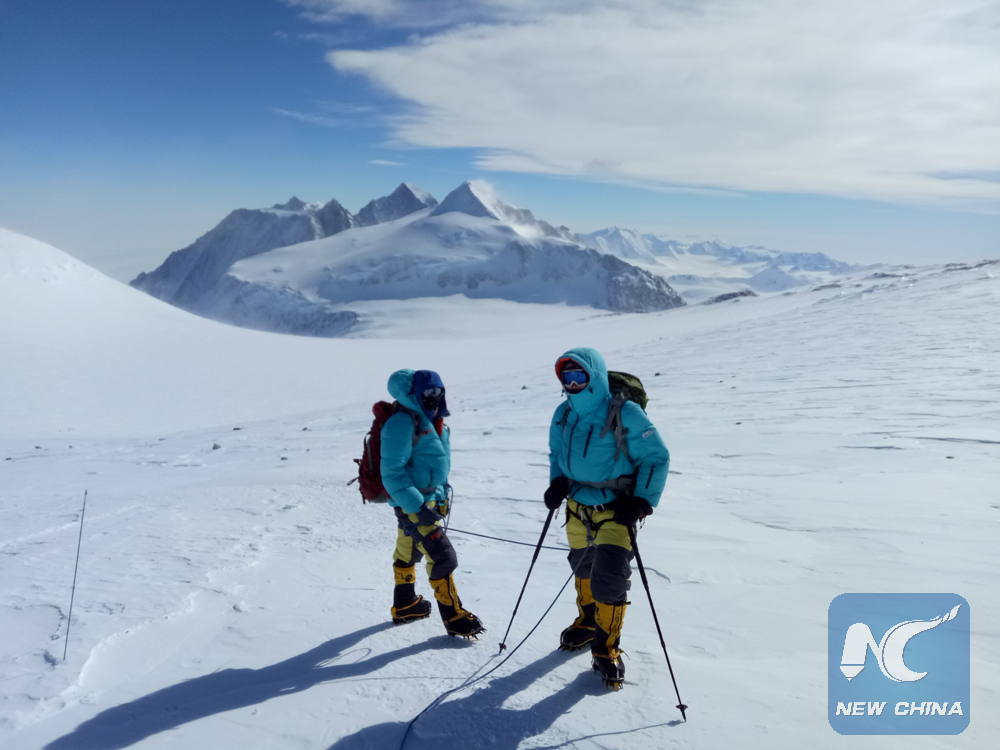
Team members are on the way to the top of Mount Vinson. (Photo provided by Tsering Tendar)
YOU NEVER KNOW WHERE IT IS
On Dec.18, a short four days after reaching the top of Vinson, the team started their new adventure --trekking to the South Pole.
It's actually more like skiing than trekking. They wore ski and held snow trekking poles with their supplies tied to them on a sledge behind.
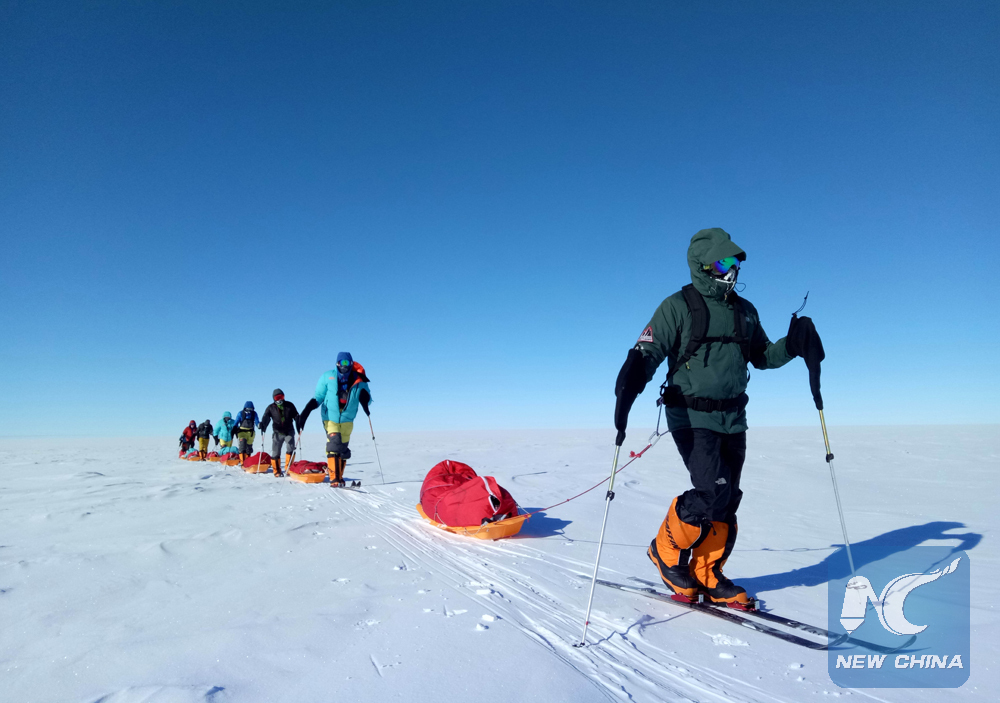
Team members are trekking to the South Pole. (Photo provided by Tsering Tendar)
When asked what the most unforgettable feeling or moment was during this expedition, Tsering said: "Whenever we looked afar, the boundless white was the only thing we could see. During our whole journey to the South Pole, we saw no other people at all." He said he constantly felt a deep sense of loneliness.
Searching for the South Pole in the world of white was no easy task. One false step could lead to a totally wrong direction. The team closely followed their GPS and daily plan.
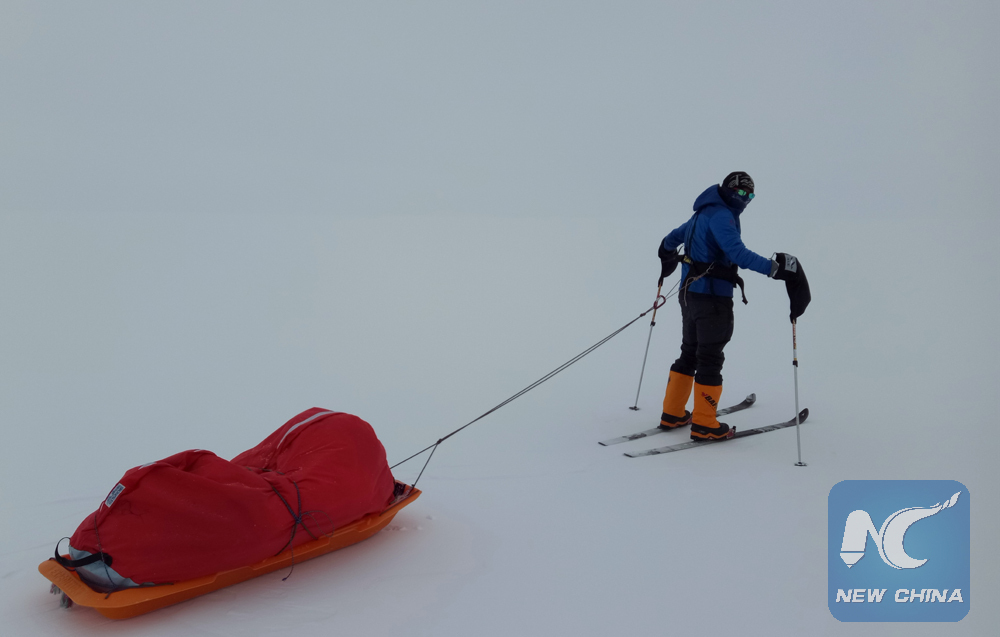
A team member wears ski and holds poles with supplies tied to him on a sledge behind on the way to the South Pole. (Photo provided by Tsering Tendar)
"I told myself I had to keep moving forward in the right direction otherwise I would be trapped here in the snow forever," Tsering said.
On Dec.25, the team finally saw a mirror ball on a ceremonial pole - the landmark of the South Pole.
"I was so happy to finally be there and all I saw was vast beauty: white snow meets blue sky in the far, far distance. Every color is at their utmost purity, just stunning. I think no place is purer than there," Tsering said.
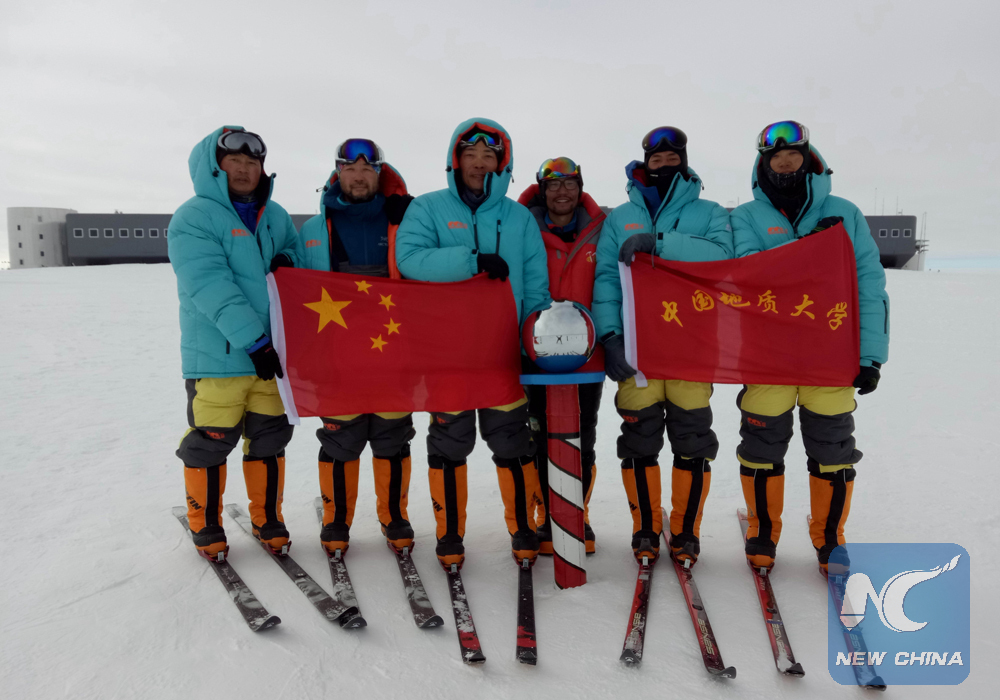
Team members pose for a picture at the South Pole. (Photo provided by Tsering Tendar)
I WILL NOT STOP
In less than five years, Tsering and Dechen conquered the seven summits and two poles, realizing their personal dreams and creating a record on the history of the China Tibet mountaineering Team.
By now, the team has reached the peaks of all the 14 mountains on earth that are more than 8,000 meters (26247 ft) high above sea level and accomplished the Explorers Grand Slam.
Looking back, Tsering said climbing mountains around the world not only brought him enormous sense of achievement, but also opened a new world to him.
"Every time I climbed a mountain, I met climbers from different countries. We sat together, joking and sharing why we climb, the stories on the way and about the mountains. Every base camp was like a small global village. I learned a lot from different people and gained deeper understanding about my career."
Looking to the future, Tsering said mountains have eternal attractions to him and he will not stop.
Although he has ascended the top of Mount Qomolangma for four times, including escorting the Olympic torch to the peak in 2008, Tsering said he wants to go there again in the future.
"I want to shoot a 360-degree picture on the peak of the earth." Tsering said, "If possible, I also want to make a film about mountaineering. "

